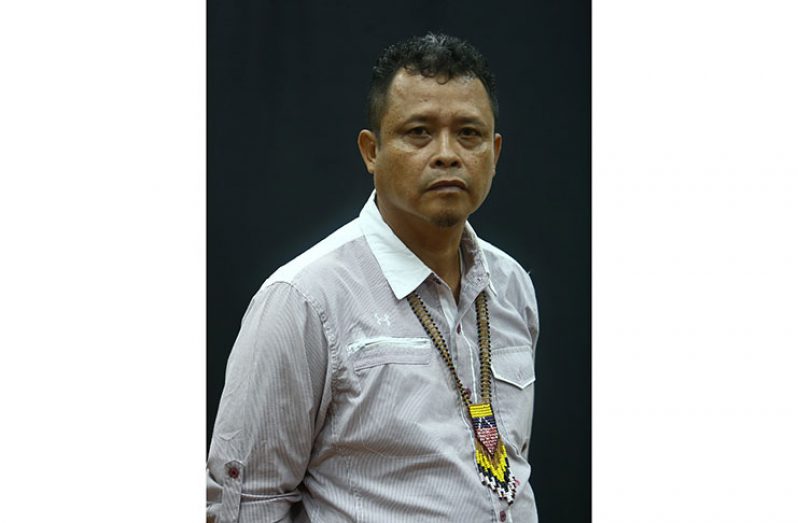…says govt addressed “long-term” needs of indigenous communities
By Alva Solomon
FORMER Region One chairman, Paul Pierre, believes that the implementation of long-term projects in the North West District and other areas across the country by the coalition government will have a lasting impact on the country’s indigenous people.
Pierre, who served under the People’s Progressive Party (PPP) as regional chairman for the Barima/Waini region prior to 2015, told the Guyana Chronicle on Monday that the People’s Progressive Party (PPP) should have done more for the nation’s indigenous communities during that party’s term in office.
However, he noted “it was more or less about handouts,” during the previous administration’s term in office, adding that the regional authorities never received the support which was needed for the development of Region One.
“I think they should have done more for indigenous communities,” Pierre, who is the current toshao of Kwebana, said.
On the other hand, he noted that the coalition government has established more long-term projects which he noted will vastly benefit the communities in the Hinterland. ”We now have more long- term, solid industries,” Pierre said. He listed several projects which were implemented in the Moruca sub-region over the past four years as evidence.
Major projects
These include a cassava processing facility which was built at Kwebana last year. Pierre said that not only will the project benefit residents of Kwebana, but other communities in the area since the end-product will add to the staple used in those areas. He explained that farmers in the area will be able to add value to their products via the facility.
The factory –a $26 million investment by the government – is expected to produce cassava flour as the main product as well as supply casareep, starch and other cassava by-products.
Establishment of the facility at Kwebana followed a study which was conducted by the Kwebana Farmers’ Cooperative. It was determined that the production of cassava flour would provide a great source of income for farmers and vendors in the local markets. As a result, 30 acres of land was cleared and prepared and cassava sticks were purchased for planting.
On Monday, Pierre also spoke about a coffee-cultivation project which was implemented in 2019 at Moruca.
Last March, the Ministry of Indigenous Peoples’ Affairs said that farmers were caring for approximately twelve thousand coffee seedlings on an effective rotation basis in a nursery which was established in the village.
Toshao of Santa Rosa, Whanita Phillips, lauded the government’s efforts at the time, saying, “this is big for us, this is awesome and something that I’m very excited about and I can see this project prospering. It will be massive, I know that, and the farmers are very excited too.”
On Monday, Pierre echoed similar sentiments, noting that the importance of agriculture is being revived in the area. ”It is a major area of development,” he said.
Infrastructural development
When asked his opinion on infrastructural development in the region over the years, Pierre noted that the completion of several road projects by the coalition government across the North West District is one of several areas of development which, he noted, is impacting the region’s advancement.
Pierre, who took a step back from the political spotlight post-2015, noted that Region One never received the support from the previous administration which it currently receives.
He said that back then, the major concern by the past government was taxes and long-term benefits of projects. “There was always an issue with the budget or some concern over taxes,” he added. ”We never got a good road,” he said.
To this end, he listed several road projects which have been undertaken by the David Granger-administration throughout the region. These include the construction of concrete, all-weather roads at Port Kaituma and in the administrative capital, the town of Mabaruma. He also listed the Kwebana road project which provides an alternative route for residents during dry weather.
Pierre said that the $110M Moruca Bridge is another project which is “significant” in terms of its importance for the region. ”That is something that was needed over the many years, the fact that it is a concrete structure, the Bemicihi airstrip was also upgraded and that is also important because emergency services can now be done better,” he added.
But despite the transformation taking place in the region, Pierre noted that persons will have their own views. He explained that “there is this belief in peoples’ minds that no matter what type of development is taking place, they have this political allegiance,” he said, adding that the latter is “hurting development “ in the region and other indigenous communities.
Pierre has been serving as vice-chair of the National Toshaos Council (NTC) and he noted that he will continue to undertake the mandate of that body, in the interest of the indigenous people and other stakeholders.



.jpg)











